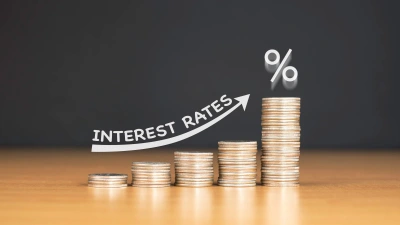Budget 2023: NAB 'concerned' RBA will hike again



Treasurer Jim Chalmers has handed down the Albanese government’s second budget since assuming office a year ago, reporting a small surplus of $4.2 billion for 2022-23— the first in 15 years.
The windfall — an improvement from previous forecasts of a $36.9 billion deficit — had been attributed to a larger tax base off the back of strong labour market conditions, and strong export volumes in the mining and resources sector.
However, the budget boost was expected to be short-lived, with a slowing economy tipped to drag the budget back into the red over the forward estimates.
The budget is expected to reflect a $13.9 billion deficit in 2023-24, before worsening to $35.1 billion in 2024-25, and $36.6 billion in 2025-26.
According to NAB’s group chief economist, Alan Oster, a failure to address structural issues in the broader economy would entrench the deficit.
“…The structural deficit, which is what really matters in terms of where you're at, really doesn't change,” he said at NAB’s post-budget briefing.
“So, [we've] got deficits forever, if I can put it that way, because the structure of the economy [isn't] addressed in the long term.”
The budget came amid mounting concerns over the economic outlook with an aggressive monetary policy tightening cycle, aimed at curbing inflation, serving as a handbrake on economic activity.
“This is an economy that is driving the budget, it's not a budget that's driving the economy,” Oster observed.
The NAB chief economist said he was “worried” about the economic outlook, adding NAB’s outlook was dimmer than the government’s projections indicated.
The government was forecasting GDP growth of 1.5 per cent in 2023-24, 2.25 per cent in 2024-25, and 2.75 per cent in 2025-26.
But Oster said waning consumer sentiment would have a larger impact than anticipated, with NAB projecting real GDP growth of between 0.7-1 per cent in 2023-24.
“We're sort of saying, at the back end of this year, the economy is going to get very close to [stalling[,” Mr Oster said.
“Now, we're not saying it's a recession, but for some people, it's going to feel recessionary [and] it's not going to be great.”
The unemployment rate, he added, may drift higher than the government was expecting, rising to just under 5 per cent in the medium term.
Rate impact
Oster also reflected on the impact of the government’s budget projections on the Reserve Bank of Australia’s (RBA) monetary policy stance.
The government did not expect inflation to return to the target range of 2-3 per cent until mid-2025.
According to Oster, this timeframe would pressure the RBA to persist with its tightening bias.
“I'm slightly concerned that they'll go again [with] another rate increase [but] we’re going to think about that before we make an official announcement,” he said.
Oster said he was “very surprised” with the RBA’s decision to resume tightening at its board meeting earlier this month, stating NAB “couldn't understand what was happening”.
But ultimately, the RBA would commence an easing cycle next year to revive a weakening economy.
“I think [the cash rate] will be back at around about 3 per cent, which is roughly neutral, by the middle of next year,” Oster continued.
In the meantime, borrowers would need to “survive” 12 months of repayment pain, particularly those switching from fixed to variable rate settings.
However, other economists, like AMP chief economist Shane Oliver, said the budget impact on interest rates would be neutral, given it was largely disinflationary with government spending constrained.
But the stimulatory effects of the Albanese government’s $14.6 billion cost-of-living package would be watched closely by the RBA.
“With the budget overall taking more out of the economy than it’s putting back in compared to what was projected last October, it’s hard to see significant implications for the RBA but it will be wary of the boost to households from the cost-of-living measures which could boost spending,” he said.
Meanwhile, in its post-budget analysis, the Commonwealth Bank retained its rate outlook, calling an end to the tightening cycle with a terminal cash rate of 3.85 per cent.
CBA has claimed rate relief is on the cards this year, with the bank projecting cuts before the close of 2023.
“CBA Group economists expect that the RBA ended its hiking cycle in May with the potential for rate cuts in the December quarter, necessitated by a sharp slowing in economic growth after rapid rate hikes. The potential policy pivot and easing of rates could yet support shares into year-end,” the bank noted.
Recommended for you
Clime Investment Management has welcomed an independent director to its board, which follows a series of recent appointments at the company.
Ethical investment manager Australian Ethical has cited the ongoing challenging market environment for its modest decrease in assets over the latest quarter.
Commentators have said Australian fund managers are less knowledgeable compared with overseas peers when it comes to expanding their range with ETFs and underestimating the competition from passive strategies.
VanEck is to list two ETFs on the ASX next week, one investing in residential mortgage-backed securities and the other in Indian companies.















